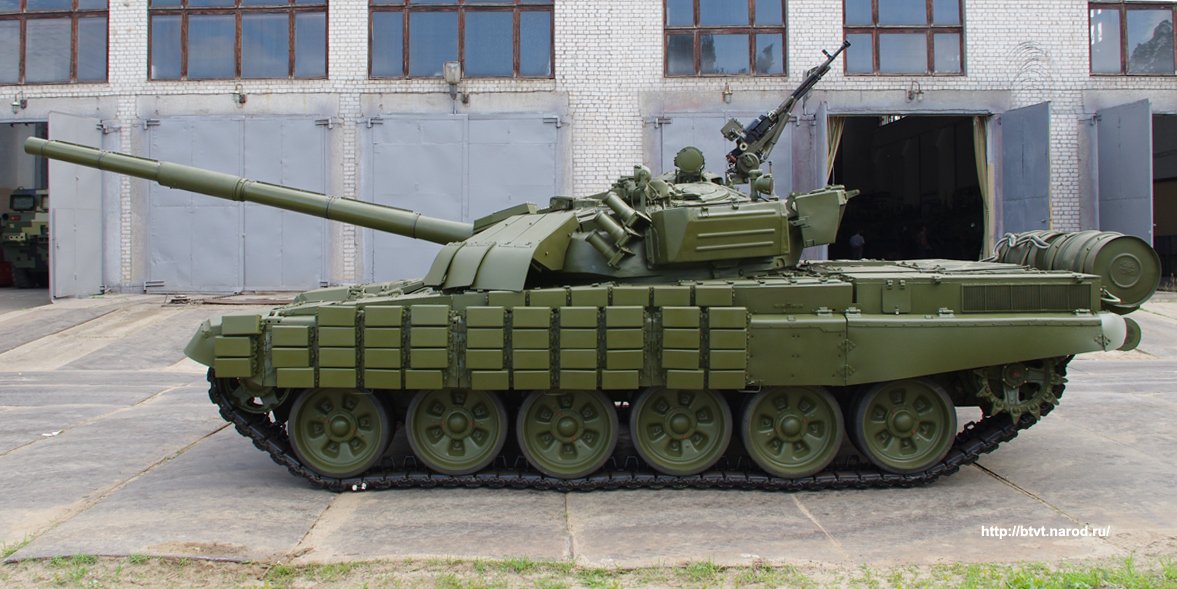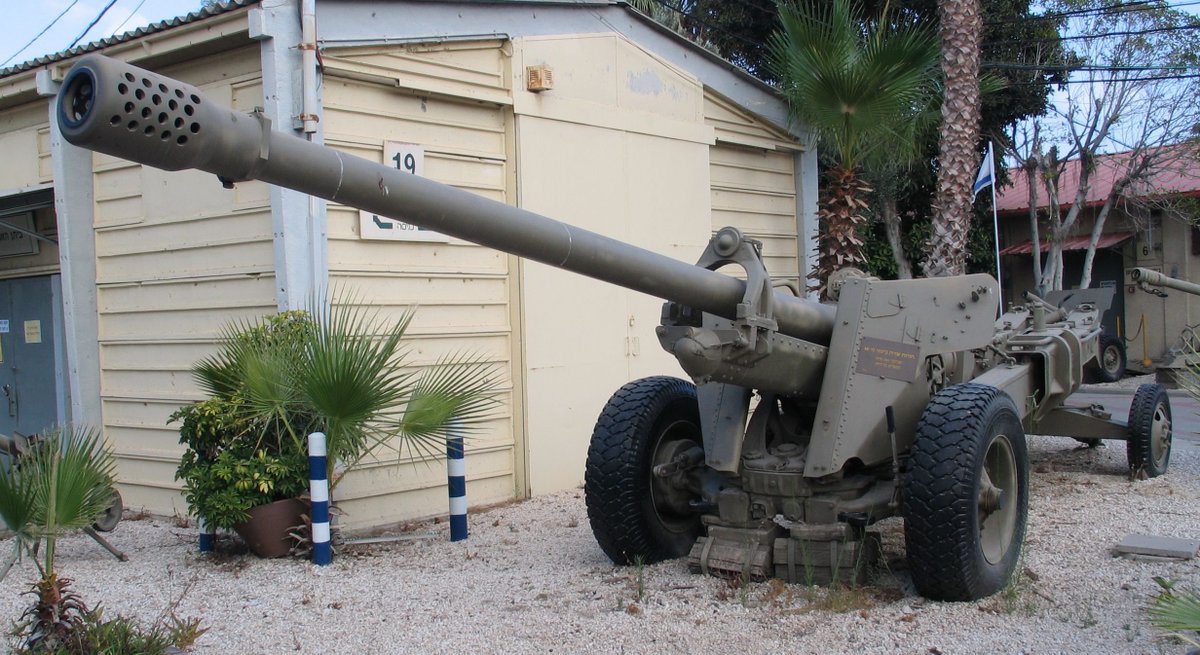(2/24) The story of the 5TDF begins with its designer, Aleksey Charomskiy. In the 1930s and 40s, he specialised in diesel aero-engines, most famously his M-30B (later ACh-30B) diesel engine used on the Yermolaev Yer-2 and Petlyakov Pe-8 long-range bombers.






(3/24) Charomskiy became interested in the German Junker Jumo 204/205 family of 2-stroke opposed-piston diesel engines in the 1930s (as seen on early Junkers Ju 86 bombers), but it was not until 1947 when he developed his own first one.






(4/24) This was the U305, a 1-cylinder engine. However, by this time, no one was really interested in diesel aero-engines because of a newfangled contraption called the 'turbojet'. So, Charomskiy decided to pitch it as the basis of a tank engine instead.
https://t.co/lAAZy04NC3dzen.ru/a/YOhI0S_csQSx…

https://t.co/lAAZy04NC3dzen.ru/a/YOhI0S_csQSx…
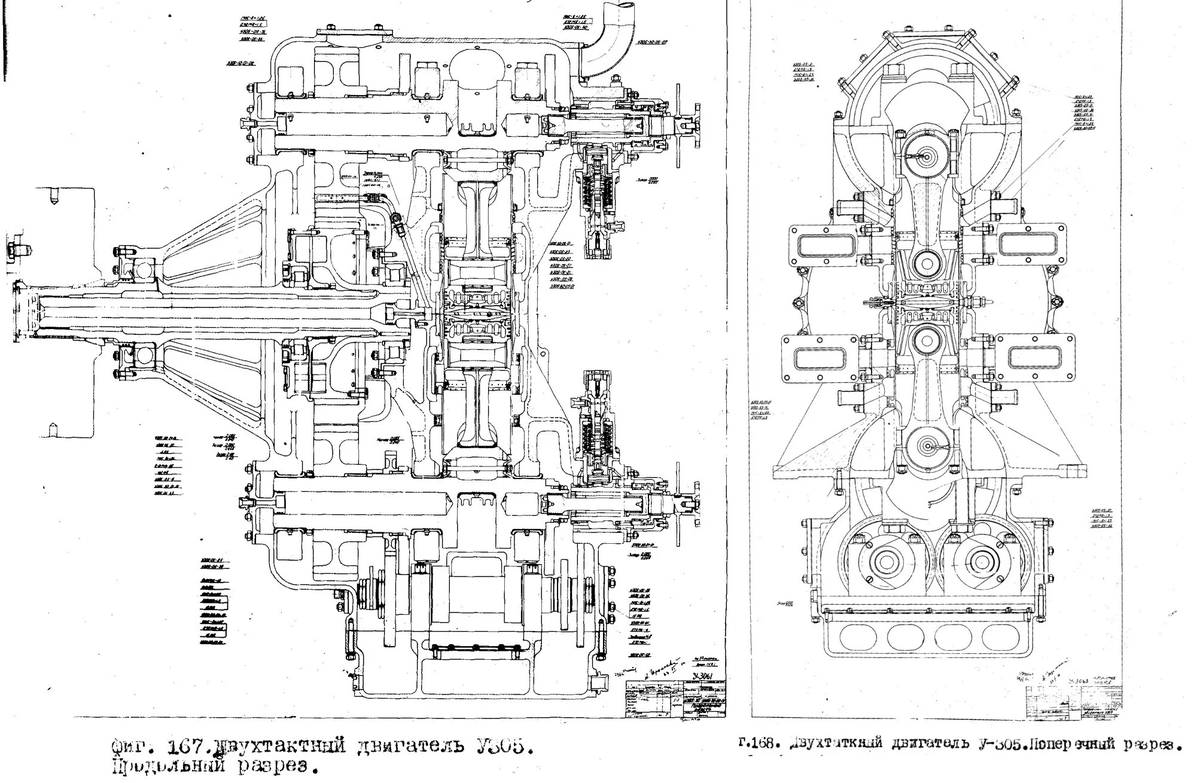
(5/24) Coincidentally, Aleksandr Morozov was looking for a new engine to power his next-generation medium tank. He believed the potential of V-12s like the T-34's V-2 was limited, and Charomskiy's new engine looked promising: compact, powerful, and efficient.


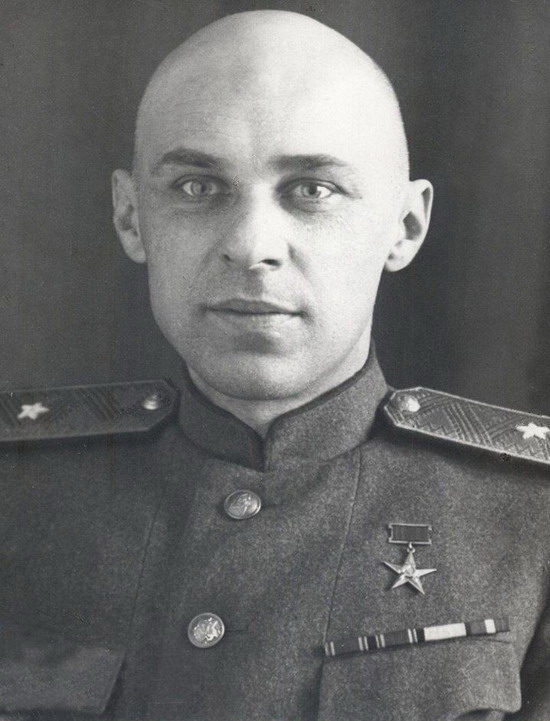

(6/24) The two began collaborating on the new tank, which became the Obj. 430. Originally, it was proposed to use 4-cylinder designs like the 4TD and 4TPD (top), but the '430 wound up with a 5-cylinder 5TD engine (bottom) for various reasons, such as better heat dissipation.



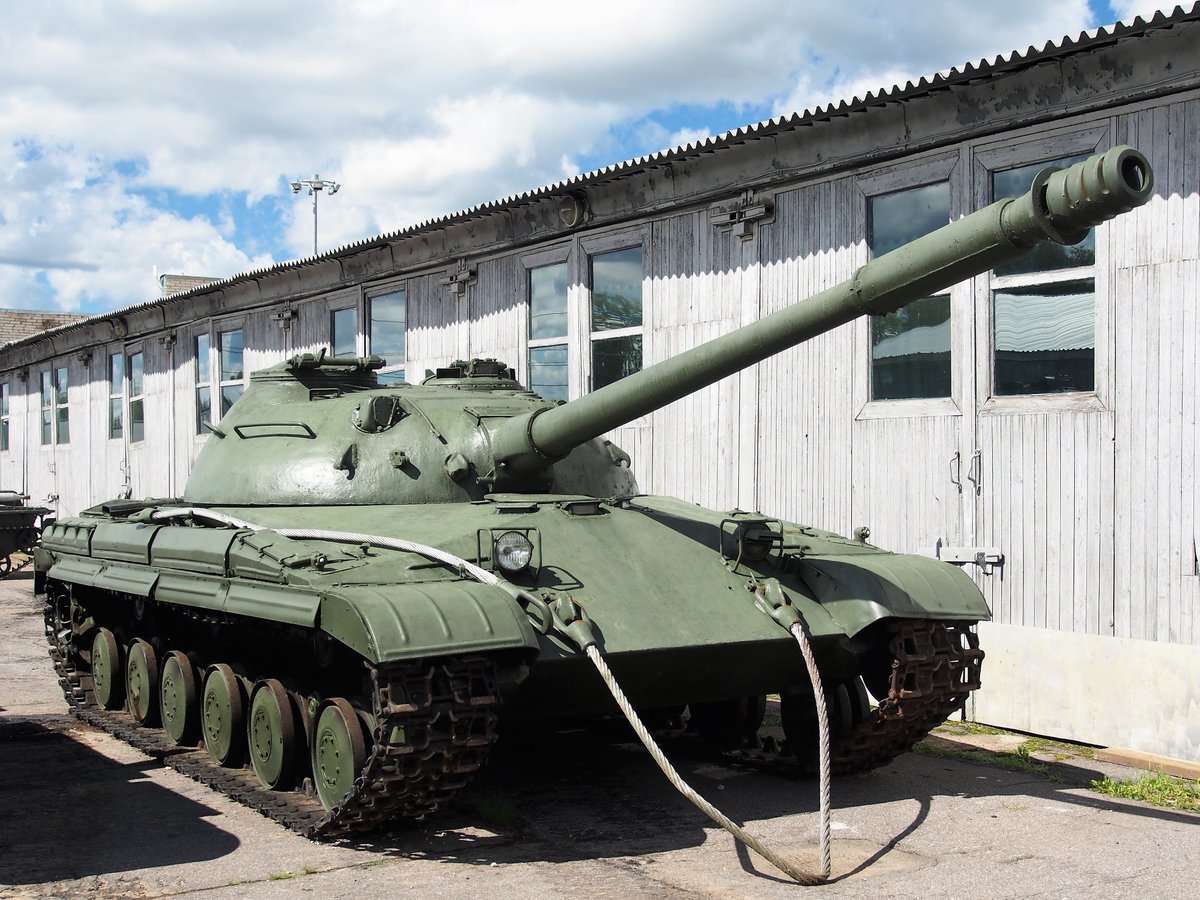


(7/24) The 430 was rejected in favour of the heavier Obj. 432 (the first T-64). The 580 hp 5TD was not sufficiently powerful, and work began to boost it to 700 hp. This task was non-trivial, and was complicated by Charomskiy's retirement in 1959. 

(8/24) He was replaced by Leonid Golinets. Ex-KhKBM engineer Yuri Apukhtin (shown), when he is not busy trying to found the 'Kharkov People's Republic' or railing against 'Ukrainian Nazism' on TopWar, gives us some insight on Golinets:
https://t.co/AW1HIrjDLetopwar-ru.translate.goog/142360-pochemu…


https://t.co/AW1HIrjDLetopwar-ru.translate.goog/142360-pochemu…


(9/24) Anyway, onto the 5TDF itself. The name (5TДФ) stands for '5-цилиндровый Tанковый Двигатель, Форсированный' ('5-cylinder tank engine, boosted'), quite self-explanatory. It is a 2-stroke opposed-piston engine, so it has 10 pistons.



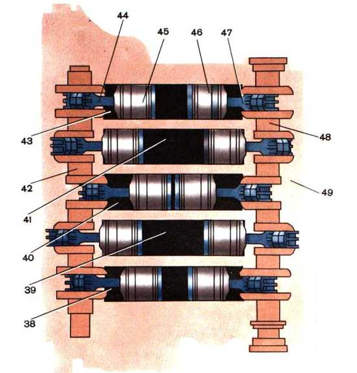
(10/24) As a 2-stroke engine, each piston completes its power cycle in 1 revolution of the crankshaft, instead of 2 like a 4-stroke engine such as the T-72's V-46-6 V-12 engine would. 

(11/24) As such, the engine has only less time to draw air in for combustion than a 4-stroke engine. It is therefore aided by a turbo-supercharger, which is both exhaust turbine and mechanically driven (exhaust alone is not enough to drive the compressor).



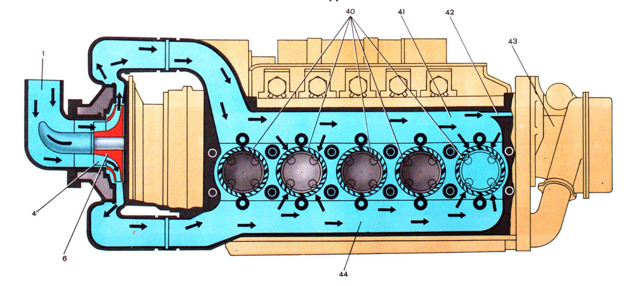
(12/24) The 5TDF also uses what is called 'uniflow scavenging'. The inlets, exhaust ports, and piston movements are arranged in such a way that the intake air and exhaust gases move in the same direction to minimise mixing during scavenging.
https://t.co/SlA3626i2Ibtvt-narod-ru.translate.goog/4/5td/5tdf.htm…


https://t.co/SlA3626i2Ibtvt-narod-ru.translate.goog/4/5td/5tdf.htm…
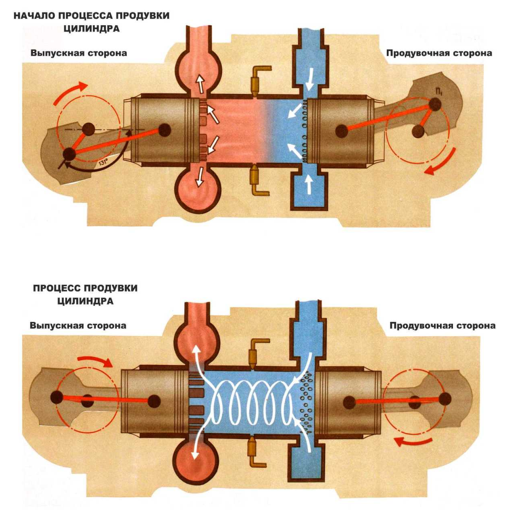
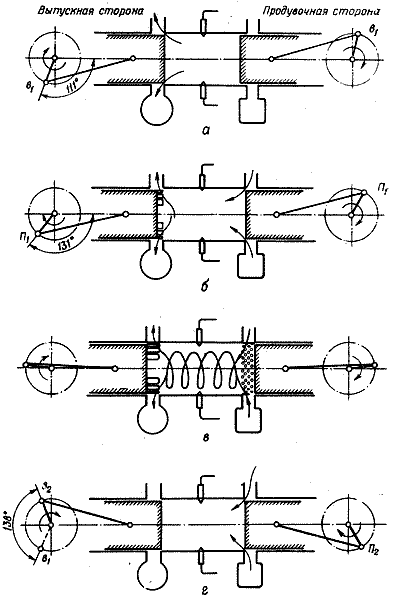
(13/24) The result is a powerful but compact engine. This diagram shows the size of the boosted 1,050 hp 5TDFMA-1 compared to the 780 hp V-46-6, as implemented in the T-72UA-1 upgrade.






(14/24) So much so that, even when you account for the slightly higher power losses due to the ejection cooling and cassetteless air cleaning systems, the T-64A has the highest power density (net power/engine compartment volume) among contemporary tanks. 

(15/24) This is complemented by the BKP (бортовая коробка передач — 'onboard/attached gearbox'), a very compact transmission unit that can be directly attached to the 5TDF without the need for an input gearbox like on the T-72 (right), but that's another story.




(16/24) The 5TDF also benefits from low specific heat transfer from the engine to the coolant and lubricant oil. This makes it much more resilient against power loss at high ambient temperatures compared to the T-72's V-12 engines.
https://t.co/2yPj1RWxpatopwar-ru.translate.goog/142360-pochemu…

https://t.co/2yPj1RWxpatopwar-ru.translate.goog/142360-pochemu…

(17/24) As always, there are trade-offs. Besides the obvious higher mechanical complexity of the engine compared to the simpler V-12s, one is that the engine is notoriously poor at starting in cold temperatures, as Dominikanets attests, if left too long. 

(18/24) The other is the higher air intake requirement. This was one of the reasons that led to the T-64 using the cassetteless air cleaner system.
https://twitter.com/CalamineW/status/1666356714835435520
(19/24) Fedorov on TopWar claims that the dust problem was unsolvable. However, having spoken to Vasiliy Chobitok, who has probably forgotten more about the T-64 than Fedorov or I will ever learn, he seems to agree more with Suvorov, that it was a crew training problem. 

(20/24) Another weakness is high lubricant consumption. This is because in 2-stroke engines the lubricant is burned together with fuel during combustion, hence why the T-64A uses nearly twice as much lubricant as the T-72 over the same timeframe.
https://t.co/6Ly77kRZgftankarchives.ca/2021/03/the-us…

https://t.co/6Ly77kRZgftankarchives.ca/2021/03/the-us…

(21/24) I don't want to go too deep into the reliability issues of the 5TDF. I'll only say this: by the time they were doing tests in the 1980s, the engine lifespan wasn't much worse than the T-72's V-46 (a significantly older design) and was way better than the T-80's GTD. 

(22/24) Personally, I think the story is kind of similar to the Chieftain's Leyland L60 engine, the 5TDF's distant cousin. It started off really bad and eventually became pretty reliable, but by then the bad first impression effectively doomed it.


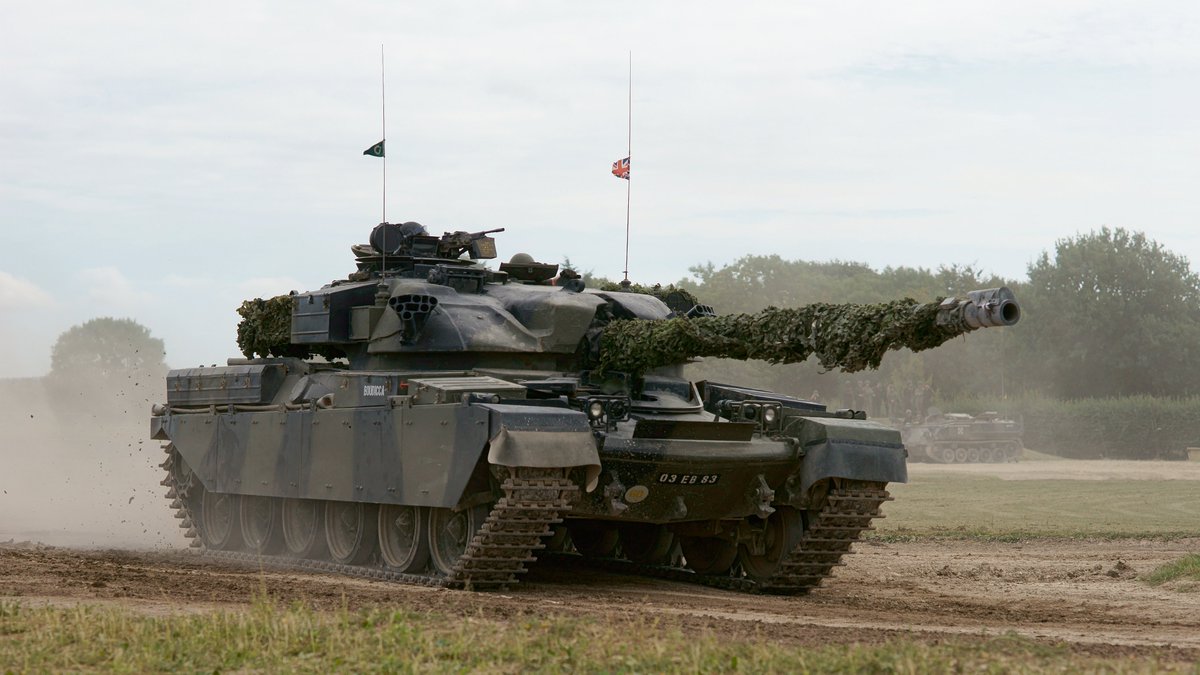

(23/24) You should ask yourself: if it really is such a bad engine, would the Ukrainians (who have a much smaller economy than the Russians) be able to afford to use it after all this time, given the stakes involved?
(24/24) By the way, the engine compartment has 2 decks. The roof deck contains the air cleaning system and radiators. It weighs 1.5 t and needs to be secured properly: according to Chobitok, not doing so has had fatal consequences on multiple occasions.
If you can understand Russian or don't mind using Auto-Translate (like me), you can also watch Teoria DVS' video about the 5TDF. It is a Ukrainian channel but does videos in Russian.
He also did a nice video picking apart the some of remains left behind after Putin's "mongoose leap" on Kyiv, to use Arty Green's term.
• • •
Missing some Tweet in this thread? You can try to
force a refresh

 Read on Twitter
Read on Twitter



















